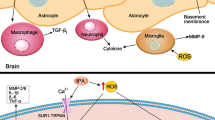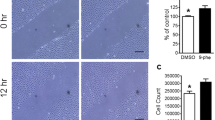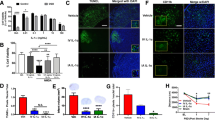Abstract
LT3001 is a novel synthetic small molecule with thrombolytic and free radical scavenging activities. In this study, we tested the effects of LT3001 as a potential alternative thrombolytic in focal embolic ischemic stroke rat model. Stroked rats received intravenous injection of 10 mg/kg LT3001 or tPA at 1.5, 3, or 4.5 h after stroke, respectively, and the outcomes were measured at different time points after stroke by performing multi-parametric MRI, 2,3,5-triphenyltetrazolium chloride (TTC) staining, and modified neurological severity score. Lastly, we assessed the effect of LT3001 on the tPA activity in vitro, the international normalized ratio (INR), and the serum levels of active tPA and plasminogen activator inhibitor-1 (PAI-1). LT3001 treated at 1.5 h after stroke is neuroprotective by reducing the CBF lesion size and lowering diffusion and T2 lesion size measured by MRI, which is consistent with the reduction in TTC-stained infarction. When treated at 3 h after stroke, LT3001 had significantly better therapeutic effects regarding reduction of infarct size, swelling rate, and hemorrhagic transformation compared to tPA. When treated at 4.5 h after stroke, tPA, but not LT3001, significantly increased brain swelling and intracerebral hemorrhagic transformation. Lastly, LT3001 did not interfere with tPA activity in vitro, or significantly alter the INR and serum levels of active tPA and PAI-1 in vivo. Our data suggests that LT3001 is neuroprotective in focal embolic stroke rat model. It might have thrombolytic property, not interfere with tPA/PAI-1 activity, and cause less risk of hemorrhagic transformation compared to the conventional tPA. Taken together, LT3001 might be developed as a novel therapy for treating thrombotic ischemic stroke.





Similar content being viewed by others
References
Whiteley WN, et al. Targeting recombinant tissue-type plasminogen activator in acute ischemic stroke based on risk of intracranial hemorrhage or poor functional outcome: an analysis of the third international stroke trial. Stroke. 2014;45(4):1000–6.
Yang SH, Liu R. Four decades of ischemic penumbra and its implication for ischemic stroke. Transl Stroke Res. 2021;12(6):937–45.
Liberatore GT, et al. Vampire bat salivary plasminogen activator (desmoteplase): a unique fibrinolytic enzyme that does not promote neurodegeneration. Stroke. 2003;34(2):537–43.
Kaur J, et al. The neurotoxicity of tissue plasminogen activator? J Cereb Blood Flow Metab. 2004;24(9):945–63.
Jiang Y, et al. Diabetes mellitus/poststroke hyperglycemia: a detrimental factor for tPA thrombolytic stroke therapy. Transl Stroke Res. 2021;12(3):416–27.
Armstead WM, et al. Red blood cells-coupled tPA prevents impairment of cerebral vasodilatory responses and tissue injury in pediatric cerebral hypoxia/ischemia through inhibition of ERK MAPK activation. J Cereb Blood Flow Metab. 2009;29(8):1463–74.
Nassar T, et al. In vitro and in vivo effects of tPA and PAI-1 on blood vessel tone. Blood. 2004;103(3):897–902.
Nicole O, et al. The proteolytic activity of tissue-plasminogen activator enhances NMDA receptor-mediated signaling. Nat Med. 2001;7(1):59–64.
Wang X, et al. Lipoprotein receptor-mediated induction of matrix metalloproteinase by tissue plasminogen activator. Nat Med. 2003;9(10):1313–7.
Wang X, et al. Mechanisms of hemorrhagic transformation after tissue plasminogen activator reperfusion therapy for ischemic stroke. Stroke. 2004;35(11 Suppl 1):2726–30.
Benchenane K, et al. Equivocal roles of tissue-type plasminogen activator in stroke-induced injury. Trends Neurosci. 2004;27(3):155–60.
Zeevi N, et al. Acute stroke management in the elderly. Cerebrovasc Dis. 2007;23(4):304–8.
Yepes M, et al. Tissue-type plasminogen activator in the ischemic brain: more than a thrombolytic. Trends Neurosci. 2009;32(1):48–55.
Akhtar N, Deleu D, Kamran S. Haematologic disorders and cerebral venous thrombosis. J Pak Med Assoc. 2006;56(11):498–501.
Ginsberg MD. Expanding the concept of neuroprotection for acute ischemic stroke: the pivotal roles of reperfusion and the collateral circulation. Prog Neurobiol. 2016;145–146:46–77.
Goyal M, et al. Endovascular thrombectomy after large-vessel ischaemic stroke: a meta-analysis of individual patient data from five randomised trials. Lancet. 2016;387(10029):1723–31.
Savitz SI, et al. Reconsidering neuroprotection in the reperfusion era. Stroke. 2017;48(12):3413–9.
Chamorro A. Neuroprotectants in the era of reperfusion therapy. J Stroke. 2018;20(2):197–207.
Liu Y, et al. Therapeutic role of a cysteine precursor, OTC, in ischemic stroke is mediated by improved proteostasis in mice. Transl Stroke Res. 2020;11(1):147–60.
Taskiran-Sag A, et al. Improving microcirculatory reperfusion reduces parenchymal oxygen radical formation and provides neuroprotection. Stroke. 2018;49(5):1267–75.
Chamorro A, et al. Uric acid therapy improves the outcomes of stroke patients treated with intravenous tissue plasminogen activator and mechanical thrombectomy. Int J Stroke. 2017;12(4):377–82.
Amaro S, et al. Uric acid therapy prevents early ischemic stroke progression: a tertiary analysis of the URICO-ICTUS Trial (Efficacy Study of Combined Treatment With Uric Acid and r-tPA in Acute Ischemic Stroke). Stroke. 2016;47(11):2874–6.
Yamaguchi T, et al. Edaravone with and without .6 Mg/Kg alteplase within 4.5 hours after ischemic stroke: a prospective cohort study (PROTECT4.5). J Stroke Cerebrovasc Dis. 2017;26(4):756–65.
Wang X, Rosell A, Lo EH. Targeting extracellular matrix proteolysis for hemorrhagic complications of tPA stroke therapy. CNS Neurol Disord: Drug Targets. 2008;7(3):235–42.
Zhao M, et al. The composition and sequence specificity of Pro-Ala-Lys-OH for the thrombolytic activities of P6A and related oligopeptides. Bioorg Med Chem. 2004;12(9):2275–86.
Fan X, et al. Annexin A2 plus low-dose tissue plasminogen activator combination attenuates cerebrovascular dysfunction after focal embolic stroke of rats. Transl Stroke Res. 2017;8(6):549–59.
Wang L, et al. Dynamic detection of thrombolysis in embolic stroke rats by synchrotron radiation angiography. Transl Stroke Res. 2019;10(6):695–704.
Matur AV, et al. Translating animal models of ischemic stroke to the human condition. Transl Stroke Res. 2022. https://doi.org/10.1007/s12975-022-01082-9.
Korninger C, Collen D. Studies on the specific fibrinolytic effect of human extrinsic (tissue-type) plasminogen activator in human blood and in various animal species in vitro. Thromb Haemost. 1981;46(2):561–5.
Fisher M, et al. Update of the stroke therapy academic industry roundtable preclinical recommendations. Stroke: J Cereb Circ. 2009;40(6):2244–50.
Lapchak PA, Zhang JH, Noble-Haeusslein LJ. RIGOR guidelines: escalating STAIR and STEPS for effective translational research. Transl Stroke Res. 2013;4(3):279–85.
Jiang Y, et al. Low dose tPA plus annexin A2 combination attenuates tPA delayed treatment-associated hemorrhage and improves recovery in rat embolic focal stroke. Neurosci Lett. 2015;602:73–8.
Kang R, et al. Three days delayed recanalization improved neurological function in pMCAO rats by increasing M2 microglia-possible involvement of the IL-4R/STAT6/PPARgamma pathway. Transl Stroke Res. 2022. https://doi.org/10.1007/s12975-022-01032-5.
Mori S, van Zijl PCM. Diffusion weighting by the trace of the diffusion tensor within a single scan. Magn Reson Med. 1995;33:41–52.
Ji Y, et al. In vivo microscopic diffusional kurtosis imaging with symmetrized double diffusion encoding EPI. Magn Reson Med. 2019;81(1):533–41.
Cheung JS, et al. Fast radio-frequency enforced steady state (FRESS) spin echo MRI for quantitative T2 mapping: minimizing the apparent repetition time (TR) dependence for fast T2 measurement. NMR Biomed. 2012;25(2):189–94.
Alsop DC, Detre JA. Multisection cerebral blood flow MR imaging with continuous arterial spin labeling. Radiology. 1998;208(2):410–6.
Ji Y, et al. Development of fast multi-slice apparent T1 mapping for improved arterial spin labeling MRI measurement of cerebral blood flow. Magn Reson Med. 2021;85(3):1571–80.
Williams DS, et al. Magnetic resonance imaging of perfusion using spin inversion of arterial water. Proc Natl Acad Sci U S A. 1992;89(1):212–6.
Juang L-H, Wu M-N. MRI brain lesion image detection based on color-converted K-means clustering segmentation. Measurement. 2010;43(7):941–9.
Nalamolu KR, et al. Attenuation of the induction of TLRs 2 and 4 mitigates inflammation and promotes neurological recovery after focal cerebral ischemia. Transl Stroke Res. 2021;12(5):923–36.
Kelly-Cobbs AI, et al. Targets of vascular protection in acute ischemic stroke differ in type 2 diabetes. Am J Physiol Heart Circ Physiol. 2013;304(6):H806–15.
Fan X, et al. A rat model of studying tissue-type plasminogen activator thrombolysis in ischemic stroke with diabetes. Stroke: J Cereb Circ. 2012;43(2):567–70.
Zhu H, et al. Annexin A2 combined with low-dose tPA improves thrombolytic therapy in a rat model of focal embolic stroke. J Cereb Blood Flow Metab. 2010;30(6):1137–46.
Zhu H, et al. Annexin A2 combined with low-dose tPA improves thrombolytic therapy in a rat model of focal embolic stroke. J Cereb Blood Flow Metab. 2010;30(6):1137–46.
Sun L, et al. Anticoagulation with dabigatran does not increase secondary intracerebral haemorrhage after thrombolysis in experimental cerebral ischaemia. Thromb Haemost. 2013;110(1):153–61.
Tjarnlund-Wolf A, et al. Plasminogen activator inhibitor-1 and thrombotic cerebrovascular diseases. Stroke. 2012;43(10):2833–9.
Etherton MR, et al. Neuroimaging paradigms to identify patients for reperfusion therapy in stroke of unknown onset. Front Neurol. 2018;9:327.
Zerna C, et al. Current practice and future directions in the diagnosis and acute treatment of ischaemic stroke. Lancet. 2018;392(10154):1247–56.
Acknowledgements
The authors would like to thank Dr. Klaus van Leyen for constructive criticism of the manuscript.
Funding
This work was supported by a sponsored research contract from the Lumosa Therapeutics Co. Ltd. (Taipei City, Taiwan).
All experiments were performed following protocols approved by Massachusetts General Hospital Institutional Animal Care and Use Committee in compliance with the NIH Guide for the Care and Use of Laboratory Animals.
Author information
Authors and Affiliations
Contributions
Y.H.J. performed animal models and behavioral assessments. Y.H.J and N.L. performed histological and biochemical assays. Y.J. and I.Y.Z. performed the imaging assessment and data quantification. Y.H.J. wrote the main manuscript text and prepared all figures. P.Z.S., M.N., A.S.D., and X.W. modified and refined the manuscript by providing professional suggestions. All authors reviewed the manuscript.
Corresponding authors
Ethics declarations
Competing interests
The authors declare no competing interests.
Conflict of Interest
The authors declare no competing interests. LT3001 was provided from the Lumosa Therapeutics Co. Ltd, Taiwan (licensed by the USA patent-US2016/0083423A1).
Data Availability
All data generated or analyzed during this study are included in this published article (and its supplementary information files).
Additional information
Publisher's Note
Springer Nature remains neutral with regard to jurisdictional claims in published maps and institutional affiliations.
Supplementary Information
Below is the link to the electronic supplementary material.
Rights and permissions
Springer Nature or its licensor (e.g. a society or other partner) holds exclusive rights to this article under a publishing agreement with the author(s) or other rightsholder(s); author self-archiving of the accepted manuscript version of this article is solely governed by the terms of such publishing agreement and applicable law.
About this article
Cite this article
Jiang, Y., Ji, Y., Zhou, I.Y. et al. Effects of the New Thrombolytic Compound LT3001 on Acute Brain Tissue Damage After Focal Embolic Stroke in Rats. Transl. Stroke Res. 15, 30–40 (2024). https://doi.org/10.1007/s12975-022-01107-3
Received:
Revised:
Accepted:
Published:
Issue Date:
DOI: https://doi.org/10.1007/s12975-022-01107-3




